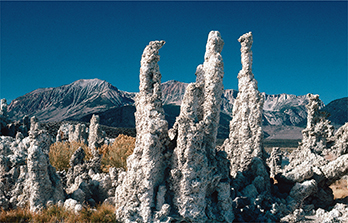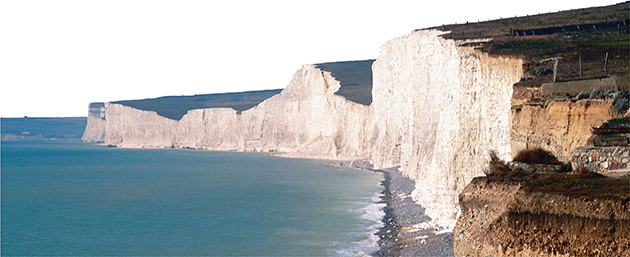Figure 18 The strangely shaped rocks in Mono Lake, California, are made of tufa, a chemical rock composed of calcium carbonate.

Chemical Rock
Chemical sedimentary rocks form when minerals precipitate out of solution. Rainwater dissolves many minerals on the land. These dissolved minerals are then carried down rivers and into the ocean. These minerals remain in solution in ocean water as water evaporates from the ocean surface. The process of evaporation increases the concentration until the minerals precipitate out and sink to the ocean floor. A common type of limestone forms from the precipitation of calcium carbonate in the oceans.
Chemical rocks can also form on land. Many dry basins in the western United States, such as the great salt flats of Utah, are covered with thick layers of precipitated salt. Figure 18 shows chemical rocks that formed in Mono Lake, California.
Organic Rock
Some rocks form as the result of organic processes. Marine animals such as coral, clams, and mussels extract calcium carbonate from ocean water to form their shells and skeletons. After these organisms die, their shells and skeletons sink to the ocean floor. Over time, the fragments compact and cement together, forming limestone. Organic limestone is one of the most common sedimentary rocks. Chalk, shown in Figure 19, is a fine-grained, white limestone that formed on the bottom of ancient seas.

How does organic limestone form?
Figure 19 The cliffs of Dover on the southern coast of England are composed of chalk, a type of fine-grained organic limestone.






